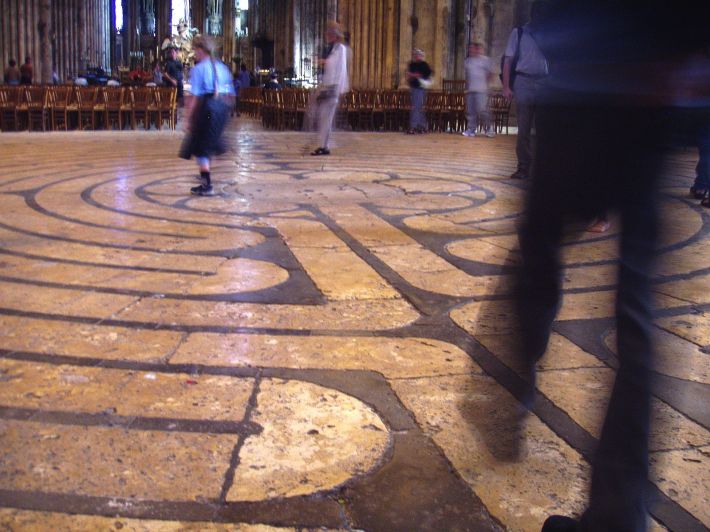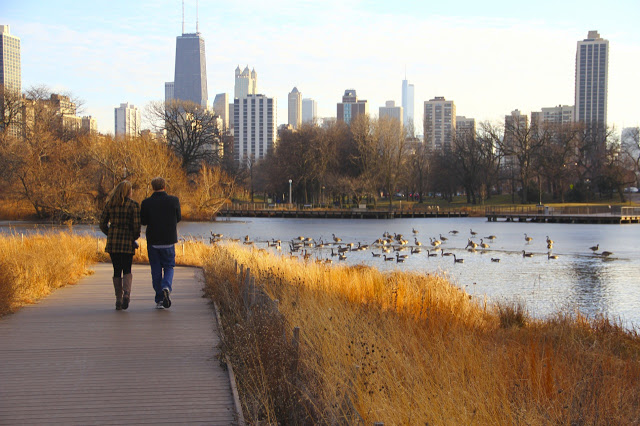Mia Park is a multi-disciplinary artist and yoga teacher in Chicago.
During these unprecedented times that require social distancing, it's important not to confuse the "shelter in place" concept with never leaving your house. If you don't feel sick, getting outdoors to walk is a responsible and safe way to practice self-care, as well as get you from point A to point B.

Current CDC outlines for protecting yourself against the coronavirus call for remaining at least six feet away from people you don't live with, to stay out of the way of respiratory droplets, and to wash your hands thoroughly and often. Walking is an especially safe way to get around since it's usually easily stay at least six feet from others (be careful on busy, narrow, sidewalks, though), and you may not need to touch many or any surfaces during your excursion. If you must open and close a door or touch something else, immediately use hand sanitizer with at least 60 percent alcohol and avoid touching your eyes, nose, and mouth.
Walking is a great from of transportation, physical activity, and recreation. It doesn’t cost anything, it’s low-impact exercise, and the additional time it takes to walk somewhere compared to faster modes is an opportunity to see your path with new perspective. And walking is highly recommended as a form of self care by many health and wellness professionals. Here are some reasons why walking, and spending time outside in general, are so beneficial.
Stress Reduction
Reducing stress is so very important right now. With rising levels of anxiety due to the pandemic, it’s especially vital to lower your stress level to keep healthy. Stress can compromise your immune system in addition to causing emotional disorders, headaches, digestive issues, and more. Brisk walking reduces stress by boosting endorphins, which reduces stress hormones and alleviates mild depression. Walking connects you to your environment in new ways, which provides refreshing insights to what previously seemed commonplace.
An American Heart Association study confirmed what we viscerally experience: Spending time in nature can reduce stress. Studies have shown that walking can improve memory and attention span. And according to a 2008 University of Georgia report, individuals with sedentary lifestyles experienced a 20 percent boost in energy and a 65 percent reduction in fatigue after following exercise programs centered around walking.
In urban environments, it may be more challenging to find large natural areas, but if you broaden your definition of nature, you’ll notice that it’s all around. Look for trees and bushes along the sidewalks, or make a park your walking destination.

Walking as Meditation
It’s been proven that a regular meditation practice lowers stress, and walking meditation is a powerful tool for self-care. The practice of noticing how you walk, where you walk, the pace at which you walk, and how your foot touches then leaves the ground, is a way to be present to yourself in real time. Focusing on being in the moment with yourself is a way to declutter the mind and connect you to stillness. The conflicting actions of practicing inner stillness while outwardly moving are helpful in training yourself to be mentally still regardless of what happens.
Walking as a form of meditation is popular among many contemplative practices. “Walking meditation is a simple and universal practice for developing calm, connectedness, and embodied awareness," according to Buddhist teacher Jack Kornfield. "The art of walking meditation is to learn to be aware as you walk, to use the natural movement of walking to cultivate mindfulness and wakeful presence.”
There’s also a Christian tradition of walking meditation, as evidenced by seen in the beautiful labyrinth at Chartres Cathedral in France. The good news is that you don’t need to be a monk or walk in a certain direction to benefit from walking meditation. It’s most beneficial to do a walking meditation outdoors, but it can be done anywhere you have room to place one foot in front of the other with as much awareness as possible.
Walking…how?
For those of us who can walk easily, we should just get out there and walk. For those with limited mobility, you don't have to do a long walk or even walk: Simply doing some movement and being outdoors is still good for you. If you’re walking, wear comfortable shoes (who cares how they look?), socks to avoid getting blisters, and comfortable, weather-appropriate clothing. It may help to have a destination in mind, like a market or mail box. During the pandemic, remember at least 6 feet away from others and start walking.
Try walking outside for 20-30 minutes several times per week to alleviate stress and give your mind a boost. If walking is challenging for you, you don’t have to walk long or far to benefit from the practice. Start by doing a ten-minute walk: See how far you walk in five minutes, and then turn around and walk back. Or if walking is relatively comfortable for you, try walking to a place you normally travel to using other methods and see how long it takes you. Try walking there at least once a week.
Listening to music or a podcast can be an interesting way to change your walking experience, making what you’re listening to a rotating soundtrack to what you’re seeing. (If you do wear earbuds or headphones, please remember to stay aware of your surroundings for personal security.)
Walking doesn’t have to be aggressive or an opportunity for failure. Consider walking to be a gentle, easy way to de-stress, exercise, gain new perspective, meditate, and practice self care.




